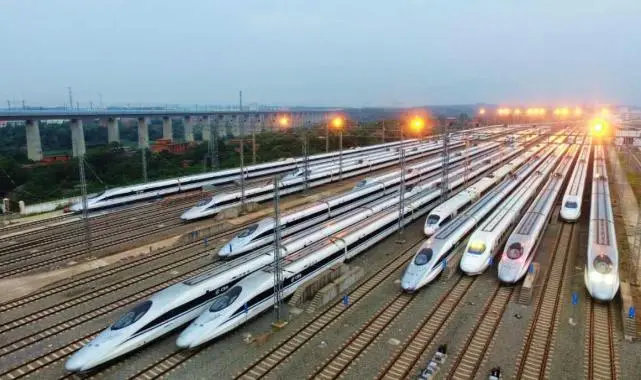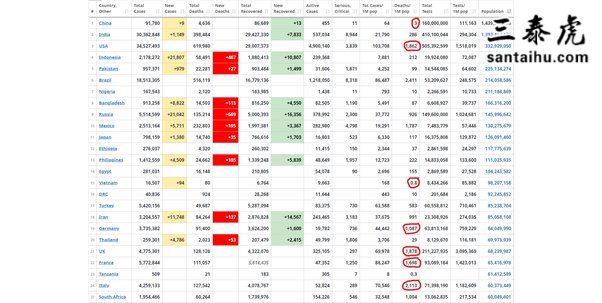Why was China able to grow much faster in manufacturing sector even though India has a more open economy?
印度经济更加开放,但为何中国的制造业增长得更快?

以下是Quora网友的评论:
China - World Leader.
India does not have a more open economy. Try to open a factory in India or do any trade and you'll find its almost impossible. There's the infamous license Raj.
India is great in software because software is new and the government didn't have a chance to mess things up.
印度的经济并没有更加开放。如果想在印度开一家工厂或做点贸易,你会发现这几乎是不可能成功的。印度还有臭名昭著的“许可证”制度。
印度在软件方面很不错,因为软件是新兴产业的,政府没来得及把事情搞砸。
China - World Leader.
India still hold strong feelings of post colonisation effects. They are still thought British came india as businessmen n overtook all lands . This deep rooted thinking highly effect on Indian policy for foreign investment .The Chinese welcome foreign investment and they developed fast
印度至今仍对后殖民时期有着强烈的感情。他们至今认为英国人为了经商来到印度,占领了印度的土地。这种根深蒂固的思想极大影响了印度对外国投资的政策。中国人欢迎外国投资,所以他们发展速度更快。
China - World Leader.
The premise of this question itself is false.
India does NOT have a more open economy than China.
In the world banks ease of doing business, India used to be ranked #142 as recently as 2014. After the Narendra Modi govt took over, some of these restrictions were chipped away and in 2019, India’s rank improved to #63.
这个问题的前提本身就是错的。
印度的经济并没有比中国更开放。
在世界银行公布的营商环境排名中,印度在2014年只排在第142位。纳伦德拉·莫迪政府执政后,取消了一些限制条件,后来到了2019年印度的排名上升到第63位。
But even that is still lower than China which is ranked at #31. I believe Singapore is #1.
It suffices to say that if Indian economy matches Chinese economy in terms of openness, it will grow even more.
There’s no secret to this recipe.
但即便如此,印度也还是低于排名第31位的中国。我没记错的话,新加坡是第一名。
可以说,如果印度经济在开放程度上赶上中国经济,那么印度经济将会增长得更快。
这也不是什么不可告人的秘密。
William W Moore
China has a plan. They have a department of experts who examine the economy and make a plan with goals and specific objectives in mind, and they have the political and economic infrastructure in place to execute the plan once they have one.
中国制订了发展计划。他们成立了一个专家部门,负责审视经济,制定目标和具体细则,一旦有了计划,他们就有了执行计划的政治和经济基础设施。
Nathan James
Related
What has China done so well to be able to grow much faster than other countries?
中国是因为哪些方面的出色表现,才使得中国经济的增长速度超过其他国家?
China’s rapid development is due to three key factors:
中国经济的快速发展得益于三个关键因素:
1. a strong central government that is meritocratic, efficient, and uninhibited by partisanship and regular elections
2. a large labour force that was cheap (not so much these days)
3. an ambitious, driven, creative, and hardworking people in a society that is fundamentally collectivist
1. 一个强大的中央政府,任人唯贤,工作效率高,没有党派内讧和定期选举的掣肘
2. 大规模的廉价劳动力,现在也没那么便宜了
3. 以集体主义为基础的社会制度,人们雄心勃勃、干劲十足、富有创造力、勤奋工作
An interesting comparison is with India. Both countries were at the same starting line 40 years ago with similar size populations and similar economic conditions (impoverished).
Today, China’s nominal GDP is 5.5X larger than India’s, and China’s GDP PPP is 2.6X larger than India’s.
China eradicated extreme poverty last year, while India is still struggling with it.
India’s infrastructure lags far, far behind China’s.
印度是一个有趣的对比。40年前,中国和印度站在同一条起跑线上,人口规模相当,经济条件相当(都很贫困)。
而如今,中国的名义GDP已经达到印度的5.5倍,中国的GDP、PPP达到印度的2.6倍。
中国去年已经完全消除了极端贫困,而印度仍在与之斗争。
印度的基础设施远远落后于中国。

What’s the main difference between these two countries? India’s political system is based on Western liberal de ocracy.
Indian society is also somewhat chaotic compared to Chinese society.
这两个国家的主要区别是什么?印度的政治制度建立在西方的基础上。
与中国社会相比,印度社会也更为混乱。
Sree V
“ The stark truth is Indian Industry ( both big companies & logically MSME also ) all along concentrated on maxmising their share in the domestic market. China ‘s manufacturing Industry was by design the key part of Export driven Growth Strategy .
While there are a no of factors which are mentioned frequently like poor infrastructure , loss of capacity due to power cuts , bureaucratic delays /costs . costs for compliance , high financing costs , high labour cots etc I will add the following
“一个严酷的事实是,印度工业(包括大公司和中小微企业)一直追求扩大他们在国内市场的份额。而中国制造业则是出口拉动增长战略的核心产业。
虽然印度有一些经常被提及的因素,如基础设施差,停电造成的产量低下,官僚主义导致的拖沓低效,服从度低,融资成本高,劳动力成本高等,我觉得还有以下问题:
The Mfg sector was protected till 1991 , even after 1991 , there was no real pressure on Mfg sector to look at cost competitiveness till around 2010 , because the domestic sector still provided them good load . But parallelly Indian Manufacturers were losing big chunk to imports esp China. Only when the World economy started slowing down , in turn impacting the domestic sector badly . the problem is being discussed in real ernest . Even now , the issue is can we ban Chinese imports ( I do admit that some of the items are being dumped at seemingly unviable cost) , there is no comprehensive realisation on how to become competitive
在1991年前,印度一直在保护本国制造业,此后在1991年-2010年,印度制造业也未曾经受到什么压力,不用担心成本竞争力的问题,因为印度有一个很大的国内市场。但与此同时,印度制造商在进口方面损失很大,特别是从中国进口各类商品。
只有当世界经济开始放缓,进而严重影响国内市场时,大家才注意到这个问题。现在的问题是我们能否禁止从中国进口商品(我承认,有些商品以难以置信的成本在印度倾销),对于如何提高竞争力,我们没有全面的认识。
It is also a fact that a Chinese Govt supports Mfg at various levels ( so do Japan, Korea,Taiwan) by providing tax sops ( not contestable by WTO) , low cost financing , Tech development programmes , pegging currency to US $ etc
事实上,中国通过提供税收优惠(WTO允许)、低成本融资、科技发展计划、将货币与美元挂钩等方式,在各个层面上支持制造业。日本、韩国、台湾地区也是如此
Big Industries mentor the feeder companies by way of assured load , financing capital costs , providing Tech , Process support , providing cash whenever they badly need etc
China has a very competitive Capital Equipment Design & manufacturing base . So the initial capital cost for Chinese companies is low . Further they must be having low cost long term loans
大型工业公司通过保证产能、控制融资资本成本、提供技术和流程支持、及时提供现金纾困等方式支援支线公司
中国拥有极具竞争力的资本设备设计和制造基地。因此,中国企业的初始出资成本很低。此外,他们的长期贷款成本较低。
Coming to the Eco-system itself , Entrepreneurs work on best Technology , best tooling , world level volumes , best process management , the culture of strict adherence to customer commitments etc
Lastly even if their labour costs are higher , their overall productivity is higher
To summarise Govt ,Big companies and MSME work in sync to ensure the Competitiveness
就生态系统本身而言,企业家追求最好的技术、最好的工具、最高的产量、最好的流程管理、严格遵守承诺的文化等。
最后,虽然中国的劳动力成本更高,但中国的整体生产率也更高
综上所述,政府、大公司和中小微企业同步努力,确保了竞争力
In India , Govt has intentions . Big Industry is trying to maxmise their returns in the short run,. MSME is not able to make a big leap , modernise, develop technology /tooling , go for big volumes , can they take risks ??? nobody to support them .
在印度,政府空有志向。大企业只想在短期内获得最大的利润回报。中小微企业无法实现大的飞跃,无法实现现代化,无力研发技术/工具,无法实现大批量生产,他们有能力承担风险吗?没有人能帮助他们。
In one sentence , We have not been able to establish the Eco-system required for modern , Competitive Manufacturing sector in India ; Liberalisation ,Privatisation & Globalisation moves in 1991 brought us this far ; But we require deeper reforms needed to be implemented by Technocracy ;
一句话,我们还没能打造出现代化、有竞争力的制造业所需的生态系统;1991年开启的自由化、私有化和全球化运动让我们有了现在的进步;但我们需要技术官僚实施更深层次的改革;
In China , even with single party system , they could unleash massive reforms and Govt played a major role in ensuring competitiveness and Export led Growth
在中国,他们还有能力进行大规模改革,政府在促进竞争力和出口导向型增长方面发挥了重要作用。
Apoorv Saxena
India has truly opened it’s economy only recently. China on the other hand is an but an open market from the start.
Smart people!
印度直到最近才真正开始开放经济。另一方面,中国从一开始就开放了市场。
中国人很聪明!
China - World Leader.
One has to look at the country itself to find out why it succeed or fail. India is still a protectionist economy and have not gone beyond its ancient caste system that restrict advancement of people in a caste from progressing to a higher caste. China does not have such a culture.
你们必须认真看看这个国家本身,才能找出它成功或失败的原因。印度现在还是一个保护主义经济体,至今还没有完全摒弃古老的种姓制度,这种制度限制了种姓的升迁。中国不存在这种文化。
The political elite in India is beholden to India’s rich and wealthy to stay in power and suppress the poor. The wealthy class pressurize the government to keep out competition. So, the local pay more for inferior locally produced goods. The wealthy has no incentive to improve and thus no incentive to invest and upgrade. China started off as where everybody is equal. They are hungry and want to improve their lives. So when China open its economy, investment rushes in and made China the global manufacturing hub.
印度的政治精英对印度的富人感恩戴德,政客们得以保住权力,压制穷人。富裕阶层向政府施压,要求阻止竞争。所以,印度人为国内生产的劣质商品支付了更多的钱。富人没有改善的动力,因此也就没有投资和升级的动力。中国从建国起,就是一个人人平等的国家。他们忍饥挨饿,急迫希望改善生活。所以,当中国开始改革开放时,外资涌入,中国因此成了全球制造业中心。
The government of India take no active part in growing the Indian’s economy whereas China’s government plan and execute strategic objectives to ensure its objectives are attain and the economy improve.
This is just a very short explanation of why one country succeed while the other stagnate.
印度政府并没有积极参与印度经济的发展,但中国指定规划,执行战略目标,努力保证目标的实现和经济的改善。
以上是我对一个国家停滞不前,而另一个国家大获成功的一个简短解释。
China - World Leader.
Because economic growth has NOTHING to do with openness and economics.
As a matter of fact, in its early stages, while the economy is undeveloped, the economy SHOULD BE CLOSED from foreign investment so that local capital can be invested in local businesses. Otherwise, local businesses will be subject to the whims of international capital who will strangle local businesses without a second thought. The result is that India has no control over its own fate; it depends on foreign capital and bankers.
因为经济的增长与开放和经济情况无关。
事实上,在经济不发达的早期阶段,应该对外国投资关闭大门,引导国内资本投资于本土企业。否则,本土企业将受制于国际资本,国际资本也会毫不犹豫地绞杀本土企业。其结果将会是印度无法控制自己的命运;完全依赖于外国资本和银行家。
One of the greatest accomplishments of the Chinese has been to insulate the Chinese economy from international capital who don’t care about Chinese businesses and entrepreneurs, and only see them as numbers on a spreadsheet.
Here is the lesson: INDIA SUFFERS FROM BEING OPEN. OPENNESS IS NOT GOOD FOR INDIA AT ITS CURRENT STAGE OF DEVELOPMENT.
中国最伟大的成就之一,就是将中国经济与国际资本隔离开来,国际资本不会关心中国企业和企业家,只把他们视为数据表上的数字。
这就是教训:印度因为放开市场而遭遇不幸。在印度目前的发展阶段,开放不是好事。
Edward Lovagrend
Related
What has China done so well to be able to grow much faster than other countries?
中国是因为哪些方面的出色表现,才使得中国经济的增长速度超过其他国家?
Devastated it's population and economy back in the 60s and then engagement with the US that caused Detente and then allowed US companies to invest in China. Going from abstract poverty to middle income with 1.4 billion people will always look like rapid development.
上世纪60年代,中国的人口和经济严重受挫,中国与美国接触,两国关系缓和,随后中国允许美国企业在中国进行投资。中国这个拥有14亿人口的大国,从极度贫困到实现中等收入,绝对是高速的发展。
Narayana
What is stop India?
-Our attitude!
Some investor compels with an offer to start an industry and the government takes years to decide. When it decides it tries to allot land and protests start. By then the investor might have ran away to China and started production.
是什么阻碍了印度的发展?
根源就在于我们的态度!
投资者提出要创办工厂,政府需要耗时数年才能最后拍板。等政府开始划拨土地时,人们就开始抗议。等到那个时候,投资者可能早都跑到中国,开始生产了。
此文由 三泰虎 编辑,未经允许不得转载!:首页 > 问答 » 印度经济更加开放,为何中国的制造业增长得更快
 中国是如何超越韩国和日本成为显示面板制造业的领导者的
中国是如何超越韩国和日本成为显示面板制造业的领导者的 现代电子制造业所需的几乎所有稀土元素,为什么中国都有
现代电子制造业所需的几乎所有稀土元素,为什么中国都有 美国能再次成为制造业大国吗,也许只是一个不切实际的梦想
美国能再次成为制造业大国吗,也许只是一个不切实际的梦想 印度经济排名全球第五,中国排名第一,印度不可能像苏杰生部长所说的那样超越中国吗
印度经济排名全球第五,中国排名第一,印度不可能像苏杰生部长所说的那样超越中国吗 为什么印度独立后变成一个贫穷的国家了,之前印度经济明明充满活力的
为什么印度独立后变成一个贫穷的国家了,之前印度经济明明充满活力的 为什么中国经济这么强大,是单纯靠他们的人口和廉价劳动力,还是因为有丰富的自然资源
为什么中国经济这么强大,是单纯靠他们的人口和廉价劳动力,还是因为有丰富的自然资源 都说古吉拉特邦人和马尔瓦尔人聪明,为什么印度经济只有中国的六分之一,印度的人均GDP远远落后
都说古吉拉特邦人和马尔瓦尔人聪明,为什么印度经济只有中国的六分之一,印度的人均GDP远远落后 Quora:印度经济如何才能实现21世纪初的中国发展速度
Quora:印度经济如何才能实现21世纪初的中国发展速度